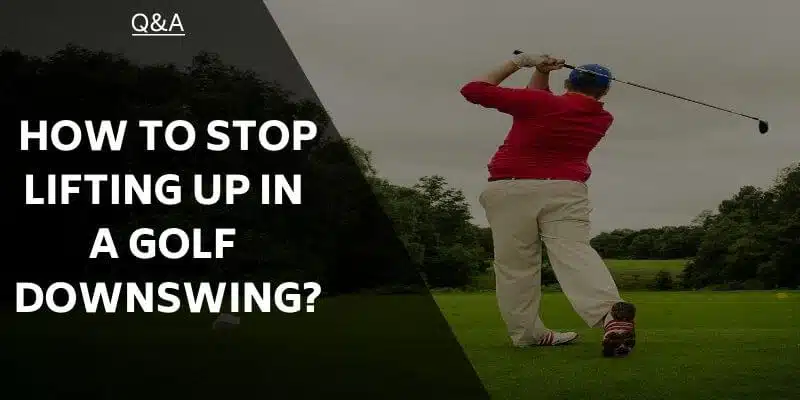One of the many great benefits is that you can generally play it into your golden years. The popularity and availability of golf carts make this even easier. You can also start from a very young age, just ask some of the pros. Despite this, golf injuries can be common.
Have you ever wondered how is it possible for a golfer to get injured they only walk and hit a ball a few times an hour? It is certainly not a high-impact sport like rugby or soccer and does not require the fitness levels of sports like squash or even tennis.
Well, golfers especially the pros are more likely to sustain serious injuries from bending over most of the time spending hours every day on the driving range, putting range, working out at the gym, running a set distance, or playing golf on the coarse.
The strain on the body is immense and as you know your body can only endure so much before it forces you to slow down. Some sustain injuries in their early childhood and never fully recover from them especially pack injuries. And then there are the hard-headed pros that try to push through to be the number one.
What about the average golfer?
If you’re the normal weekend or occasional golfer this does include you, as there are more injuries among amateurs than pros. The normal person playing golf for the fun of it does not realize that you first have to warm up your cold muscles before attempting to tee the first shot to the flag pin. Being there done that it does not work, the next day you wished you stayed in the 19th hole.
Prevention is better than cure
Golf uses a complex range of muscles and there is a lot of repetitive movement that puts strain on joints and muscles. There are several exercises that help to strengthen these muscles which will not only improve your strength but also reduce the risk of injury. Warming up before a round of golf or even a practice session is also a good idea.
Over time, getting your stance, posture, and swing mechanics will further help to reduce the risk of injury.
List of the most common injuries
- Back injuries
- Knee injuries
- Neck injuries
- Hip injuries
- Tendinitis in the Elbows
- Rotator cuff injuries
- Wrist injuries
- Hand injuries
- Foot and Ankle Injuries
- Skin Cancer
1. Back injuries
Imagine the stresses endured by your back muscles and spine while taking your tee shot. Even worse can be a bunker shot seeing that’s where most of us end up as a magnetic force pulling our ball to the sand.
The risk is especially high when you try and force the ball beyond your body’s capability. That’s when you can strain your back and cause major injury to the muscles or spine.
The constant repetitive bending also does not help the back muscles and the spine.
2. Knee injuries
Once again force seems to be the main culprit here. The amount of force you place on your knees while taking a swing can tear your ligaments or cause soft tissue damage.
Many knee injuries can also be from overuse and poor stance. Of course, people suffering from arthritis may experience more knee injuries or pain from their pre-condition.
3. Neck injuries
This is fairly common especially with less experienced golfers. If you spend hours walking from tree to tree, looking up and down, swinging your clubs, the neck will take some strain. If overdone, these movements can cause the neck to go into painful spasms.
4. Hip injuries
The hip joint can withstand a large amount of stress but is very vulnerable to injury. Playing golf involves a tremendous amount of twisting and pivoting movements.
During the swing, the hip is subjected to repeated abuse through extension or flexion forces. It is these rotational and shear forces that cause injuries such as low back injuries and groin strains. A couple of pros have already undergone hip replacement procedures.
5. Tendinitis in the Elbows
Tennis elbow playing golf sound ridiculous but this happens to the best of us. This is a very painful injury where your fingers start feeling like pins and needles and you don’t have any strong grip to make a proper shot.
This is normally caused by people performing routine activities that require repetitive movements that increase stress on the tendons this includes improper swing motion and over practicing your swing. And yes, I have to say the older you get the more likely the risk of getting tendinitis.
6. Rotator cuff injuries
Before you take a swing from the rough where many of us often land, study your surroundings first. Look especially at where your ball is lying, there might be a rock or root in front of the ball that will cause you serious injury especially to your rotator cuff.
Taking out deep divots, any green keepers nightmare, will also assist you in developing a pain that may be felt in the shoulder or upper arm, often during the night, and when extending arms overhead. Welcome to the rotator cuff injury club.
This is a serious injury and it can take a long time to heal. This will be frustrating and keep you out of the game for some time. Do your best to reduce the risk and if it does occur, give it rest and let it heal.
7. Wrist injuries
The typical high-speed swing and the repetitive movements of the sport can place your wrists at high risk for injury. The same as rotator cuff injury, watch what you are hitting. Imagine hitting your ball too low because of your position and not realizing that the ball is lying on top of a root. You will soon find out what a wrist injury feels like.
8. Hand injuries
This injury is nearly the same as with wrist injuries the hands and fingers can be placed at high risk for injury. Learning the proper grip and avoiding long periods of ball bashing can prevent all these injuries. Broken bones caused by sticks and stones may also damage the blood vessels through repeated blows disrupting the blood flow traveling to the fingertips.
9. Foot and Ankle Injuries
Taking your stance into consideration when you line up your shot, your entire body acts and works together to make the shot possible. Your feet are the base of all the energy or force you to apply through the club to the ball. Each foot has to move differently during a golf swing. The back foot allows for more energy release during the follow-through than the front foot. When you as a golfer lose your balance or footing during the swing you might sprain your foot or ankle.
10. Skin Cancer
This is another major risk and something no golfer should ignore. In the past, many people were ignorant of this risk and perhaps the sun was not as powerful as it is today. Remember, the sun can still do damage even if it is overcast.
Sunburn is not only painful and unpleasant but can contribute to the risk of skin cancer and other conditions.
Taking into account that your skin is the largest organ of the body, spending four to five hours exposed to the sun without any protection sunburn is your destiny. Use a quality sun protection cream and preferably a hat.
Conclusion
A very wise old doctor once said when asked if cardiovascular exercise can prolong life responded that the heart is only good for so many beats and that’s it. Don’t waste it on exercise.
Jokes aside, everything wears out eventually. Exercise, fresh air, and enjoyment will help to improve your quality of life. An injury will ruin this. Some injuries are temporary but if not addressed they can become permanent and put an end to your golfing enjoyment.
Learn the correct exercises to reduce the risks and the other important considerations that must be applied to prevent injury. Know how to identify any injuries and treat them correctly as soon as possible. This will help to keep you out there enjoying the great sport more often and with more confidence and comfort.
Nick is the founder of GolfSpan and an avid golfer. He's not quite a pro but has over 15 years of experience playing and coaching golfers worldwide. His mission is to bring the golfing community a better experience when it comes to choosing the right golf gear and finding the right setup for your game.






